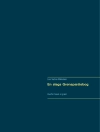The cranial nerves are an endlessly fascinating family of twelve nerves that have a dramatic impact on our daily lives. A dysfunction of the cranial nerves can cause loss of vision or double vision, loss of smell, poor balance, or loss of muscle function, and can also be an indicator of underlying neurological disorders. The Clinical Anatomy of the Cranial Nerves: The Nerves of ‘On Old Olympus Towering Top’ is an engaging and accessible book on the anatomy and clinical importance of these unique nerves.
The text opens with a brief introduction of key neuroanatomical concepts that relate the clinical and anatomical sections that follow. Additionally, this book uniquely provides a detailed description of the bones of the head and face in order for the reader to understand the routes taken by the cranial nerves through the skull. Chapters then detail each nerve and its unique impact in relationship to our senses, motor function, and health. Vividly illustrated and supported by real-life clinical cases, the book will appeal to anyone wishing to gain a better understanding of the cranial nerves.
Merging anatomical and clinical information with intriguing clinical cases, The Clinical Anatomy of the Cranial Nerves: The Nerves of ‘On Old Olympus Towering Top’ introduces readers to the anatomy and diverse function of this intriguing family of nerves.
Inhoudsopgave
Preface xi
Contributors xiii
Acknowledgments xv
Introduction xvii
1 The Olfactory Nerve 1
Anatomy/Function Summary 1
Anatomy/Function 3
Clinical Aspects 5
References 16
2 The Optic Nerve 17
Anatomy/Function Summary 17
Anatomy/Function 19
Clinical Aspects 25
References 40
3 The Oculomotor Nerve 43
Anatomy/Function Summary 43
Anatomy/Function 45
Clinical Aspects 53
References 62
4 The Trochlear Nerve 65
Anatomy/Function Summary 65
Anatomy/Function 67
Clinical Aspects 70
References 74
5 The Trigeminal Nerve 75
Anatomy/Function Summary 75
Anatomy/Function 77
Clinical Aspects 90
References 108
6 The Abducent Nerve 111
Anatomy/Function Summary 111
Anatomy/Function 113
Clinical Aspects 117
References 121
7 The Facial Nerve 123
Anatomy/Function Summary 123
Anatomy/Function 125
Clinical Aspects 139
References 151
8 The Vestibulocochlear (Acoustic) Nerve 153
Anatomy/Function Summary 153
Anatomy/Function 155
Clinical Aspects 160
References 167
9 The Glossopharyngeal Nerve 169
Anatomy/Function Summary 169
Anatomy/Function 171
Clinical Aspects 179
References 186
10 The Vagus Nerve 187
Anatomy/Function Summary 187
Anatomy/Function 190
Clinical Aspects 197
References 214
11 The Accessory Nerve 217
Anatomy/Function Summary 217
Anatomy/Function 220
Clinical Aspects 225
References 228
12 The Hypoglossal Nerve 229
Anatomy/Function Summary 229
Anatomy/Function 230
Clinical Aspects 233
References 237
13 Nervus Terminalis (Cranial Nerve N) 239
Anatomy/Function 239
References 241
14 Concluding Remarks: The Past and Future and Magic of the Cranial Nerves 243
Cranial Nerve II: Take Care of your Sight 245
Howard P. Cupples
Cranial Nerves II, III, IV, and VI: Visual Abnormalities in Children in a Developing Country 247
Ujjowala D. Shrestha
Cranial Nerves III, IV, and VI: Not all is as it seems with Eye Movements 249
Jonathan Trobe
Cranial Nerve V: Be Careful What you ask for! 252
M. Anthony Pogrel
Cranial Nerve V: The Best Laid Plans … 254
Raymond Sekula and Andrew Frederickson
Cranial Nerve VII: Sometimes it is Hit or Miss 256
Raymond Sekula and Andrew Frederickson
Cranial Nerve VII: Tragedy Behind a Facial Nerve Paralysis 258
Peter J. Koehler
Cranial Nerve VII: Facial Nerve and Facial Function 261
Alex Senchenkov and John E. Woods
Cranial Nerve VIII: Spinning Wheels 264
Laurie Swan
Cranial Nerve X: Speak up, Please, I cannot hear you 266
Lucille Hess
Cranial Nerve X: Vexing Vocals 268
Mohan K. Rao
Cranial Nerve X: Vagotomy – Fond Memories of an Obsolete Operation 270
Carol E.H. Scott-Conner
Cranial Nerve XII: Sometimes The Bad News is Really Bad 272
Mortimer Lorber
References 277
Over de auteur
Joel A. Vilensky is Professor of Anatomy and Cell Biology at Indiana University School of Medicine, Fort Wayne, Indiana.
Wendy M. Robertson is Senior Staff Neurologist at Henry Ford Hospital in Detroit, Michigan.
Carlos A. Suárez-Quian is Professor and Director of Medical Gross Anatomy at the Georgetown University School of Medicine, Washington, D.C.












